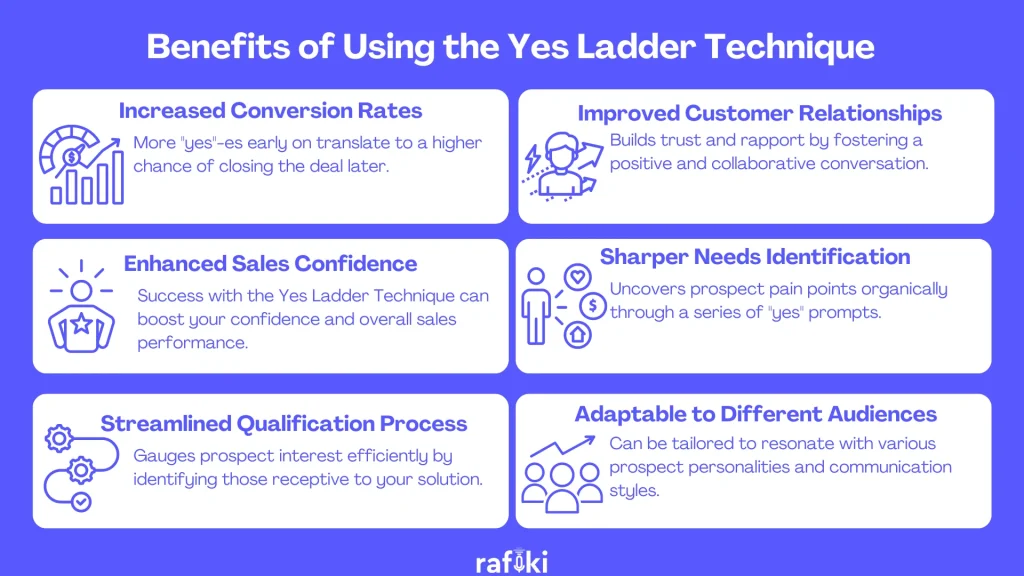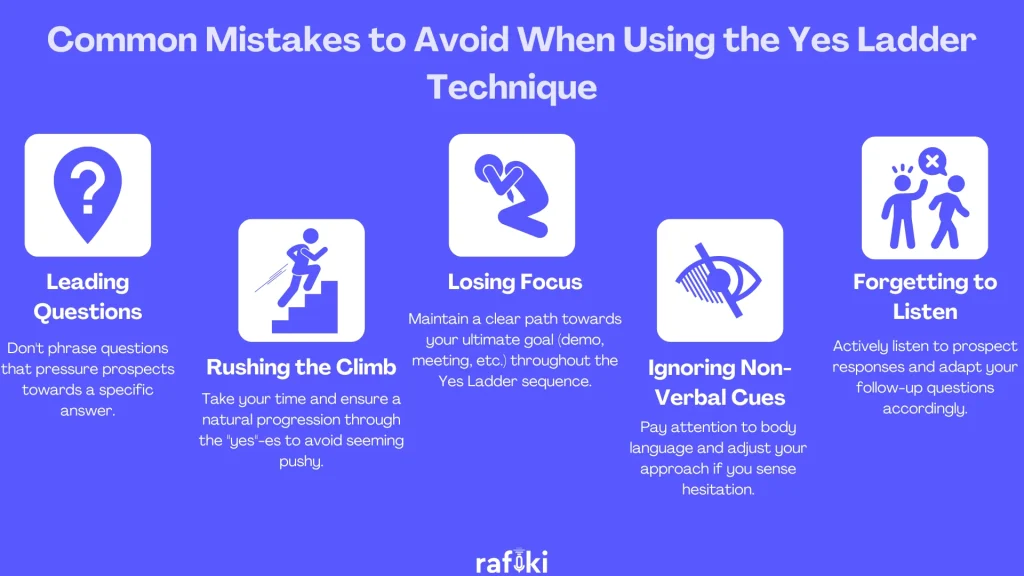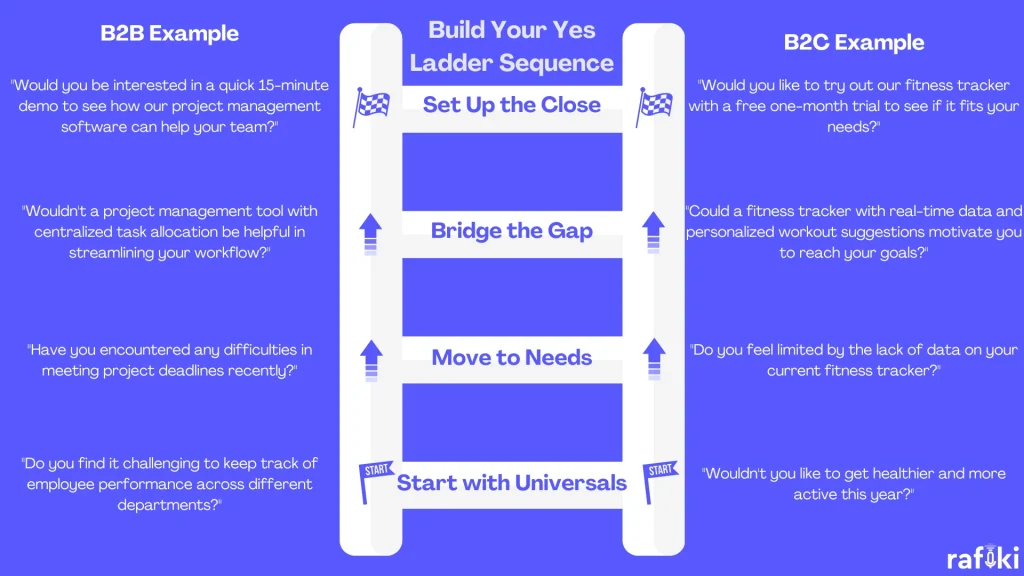Why Rafiki
Pricing


Pricing
Solutions

RevOps Leaders
Synchronize revenue generating functions

SDR Leaders
Get your team aligned and Coach your Reps 3x faster at scale

Sales Leaders
Unlock pipeline truth, drive confident forecasts

Ever feel like closing deals is an uphill battle? You spend ages nurturing leads, only to hear "no thanks" at the final hurdle. The truth is, there's a psychological trick that can significantly boost your conversion rates. It's called the Yes Ladder Technique, and it's about strategically guiding prospects towards saying "yes" more often throughout the sales conversation. This simple shift can have a dramatic impact on your success.
Remember the movie "Yes Man," where Jim Carrey's character transforms his life by saying "yes" to everything?

What a great movie that was. Although it’s ill-advised to prompt someone into saying yes like in the GIF above, the message of the rest of the movie - where Jim Carrey’s character’s experience turns positive after he starts saying yes more - holds true for your prospects too.
The Yes Ladder Technique taps into a similar psychological principle: the power of commitment and consistency. When someone agrees to a small request, they feel a sense of obligation to follow through and remain consistent with their initial choice. This is known as the foot-in-the-door technique. The Yes Ladder builds on this by creating a series of "yes”-es, each one subtly nudging the prospect towards a larger commitment. As they say "yes" more often, they become psychologically invested in the conversation and more receptive to your final ask. It fosters trust and increases the likelihood of a positive outcome.
Keep in mind, you should be gently guiding prospects towards your ultimate goal, whether it's a demo, a free trial, or simply moving further down the sales funnel. An aggressive push or over zealous attitude can backfire. But if done correctly, it can be a powerful tool for building rapport, increasing engagement, and ultimately, closing more deals.
The Yes Ladder Technique is universally applicable. But our interest is in sales. Imagine you're a B2B salesperson pitching project management software. Using the Yes Ladder, you might start by confirming a pain point: "Do you find current project timelines challenging to manage?" Once they agree, you can climb the ladder: "Wouldn't a centralized platform for task allocation be helpful?" Another "yes" sets you up for the bigger ask: "Would you be interested in a quick demo to see how our software can streamline your process?"
Now, picture yourself as a B2C salesperson selling a fitness tracker. You could open with, "Looking to get more active this summer?" A positive response allows you to inquire, "Would having real-time data on your steps and workouts motivate you?" If they agree, you can then propose, "How about trying out a fitness tracker with a free trial?" See how these small "yes”-es pave the way for a smoother close?
Let’s do a quick recap of the benefits of using the technique:

The Yes Ladder Technique shines throughout various stages of the sales cycle, but it's particularly effective during the qualification phase and early relationship building. Here's why:
Beyond the stage, the Yes Ladder can also be tailored to different prospect personas. For analytical thinkers, focus on questions that highlight the logic and benefits of your solution. For relationship-oriented prospects, weave in questions that emphasize how your product or service can improve their lives or solve their specific challenges. If you're talking to decision makers, focus your questions on team performance, long term goals or strategic issues. For individual contributors, it’d be better to focus on individual performance and solving immediate & tactical problems.
Ready to incorporate the Yes Ladder Technique into your sales conversations? Before we get into it, let’s remind ourselves what the common mistakes in applying the technique are:

Now that we have a better context, here's a breakdown of the key steps to implementing the Yes ladder technique:
The foundation of the Yes Ladder lies in your questions. They should be clear, concise, and designed to elicit positive responses. Here are some tips:
Now, map out your Yes Ladder sequence. This will vary depending on your sales pitch and the prospect's needs. However, a good rule of thumb is to start with very easy "yes"-es and gradually increase the level of commitment as you progress.
Here's a basic structure:

The key to a successful Yes Ladder is ensuring a smooth flow from one question to the next. Listen attentively to the prospect's responses and use them to organically bridge the gap between questions.
The Yes Ladder Technique is a powerful tool for turning hesitant prospects into loyal customers. By strategically guiding them through a series of "yes”-es, you can build trust, uncover needs, and ultimately close more deals. Keep in mind, the key lies in crafting compelling questions, maintaining a smooth flow, and adapting to your audience.
See how Rafiki, the conversation and revenue intelligence platform, can help you implement and track this technique for maximum impact. Sign up for your free 14-day trial today and discover how Rafiki can transform your sales conversations!
Master the Yes Ladder